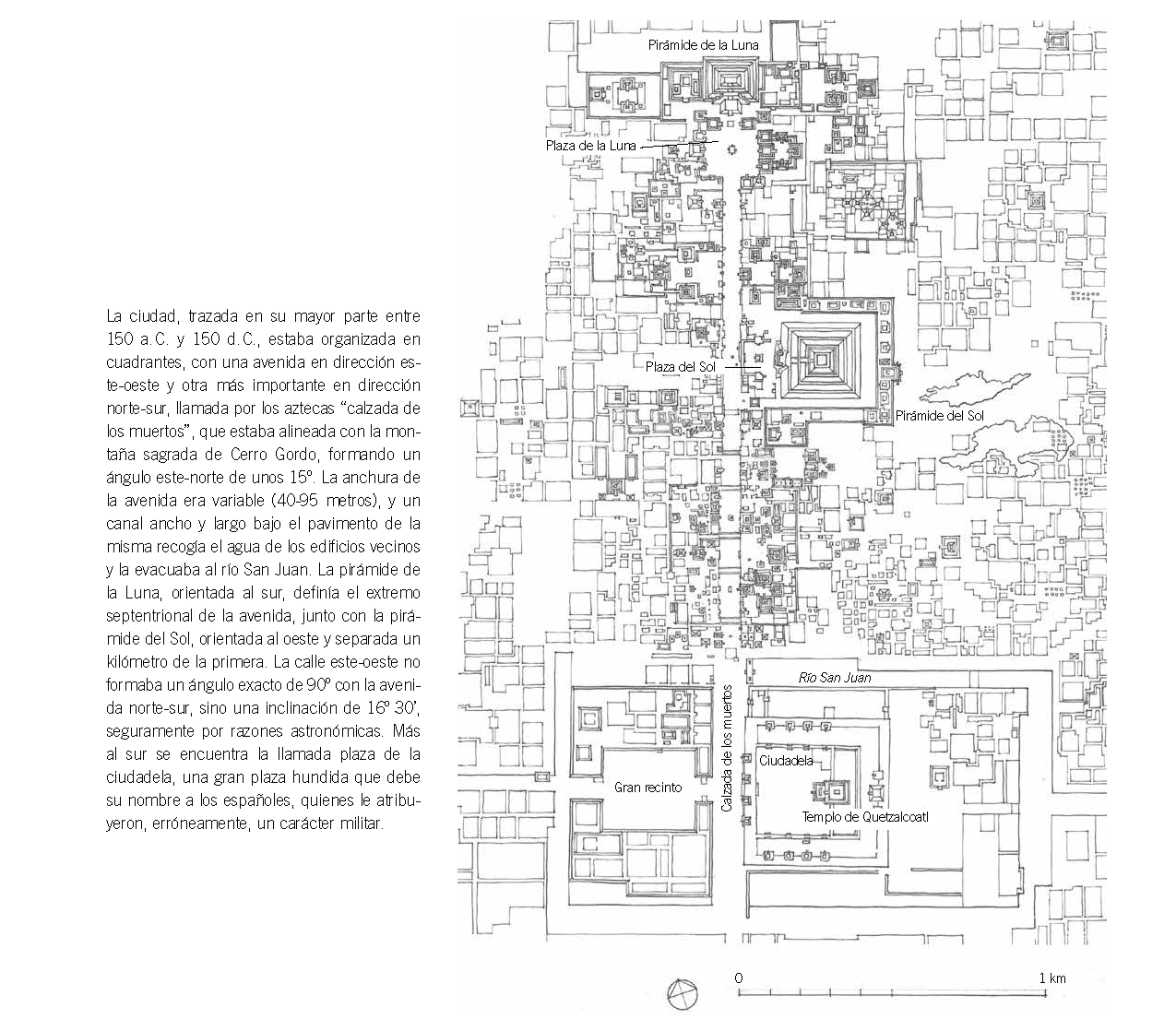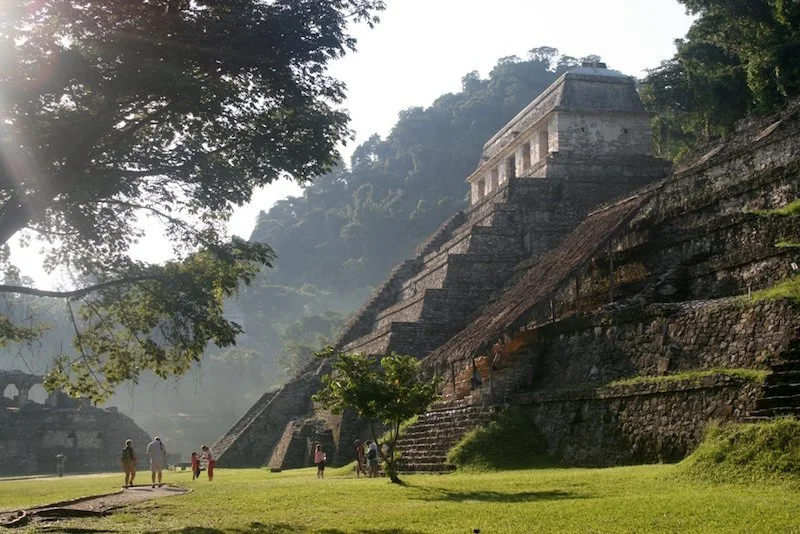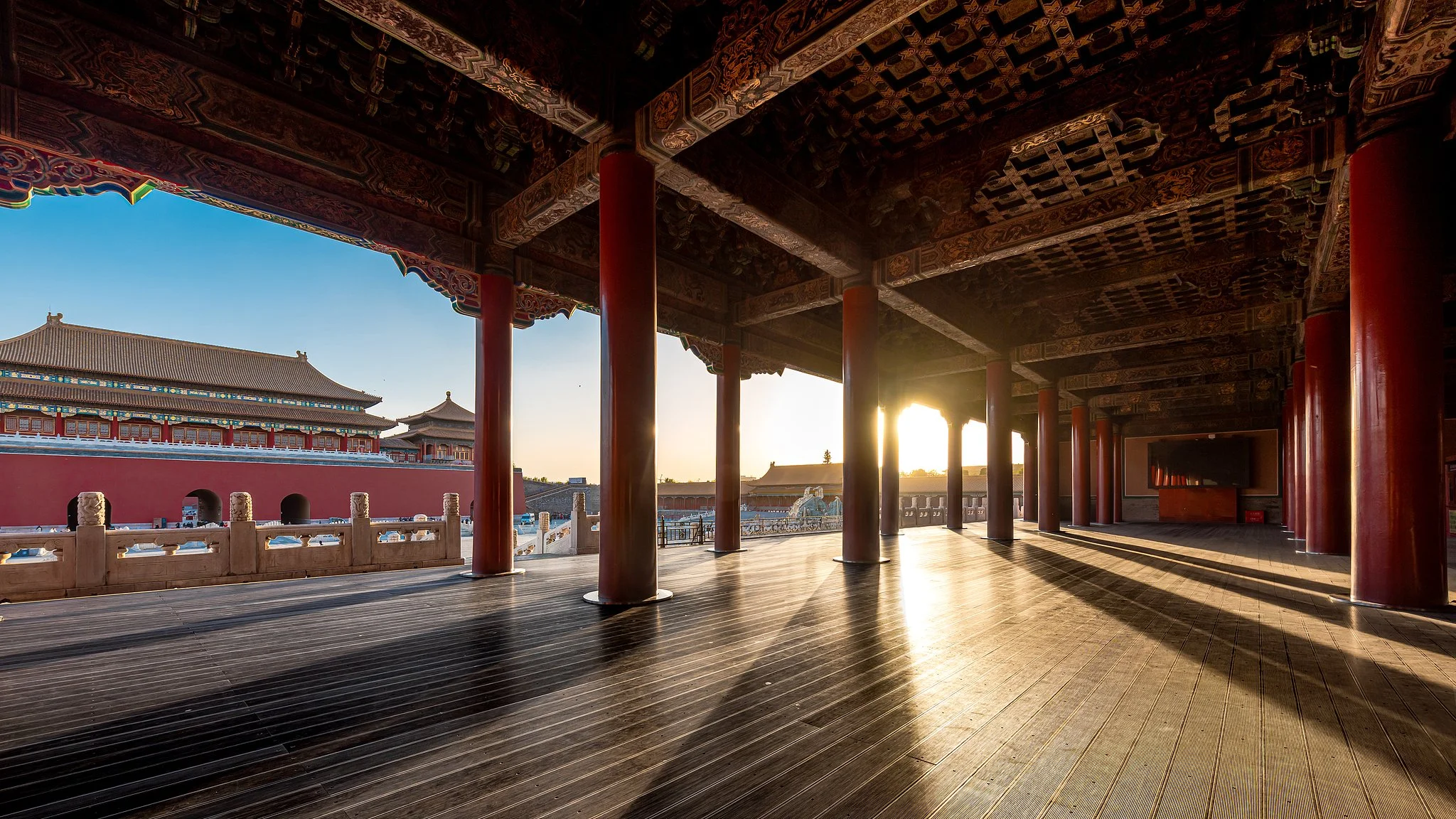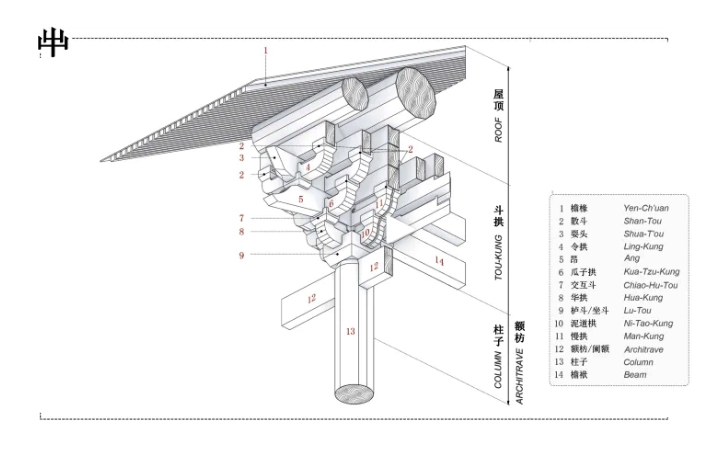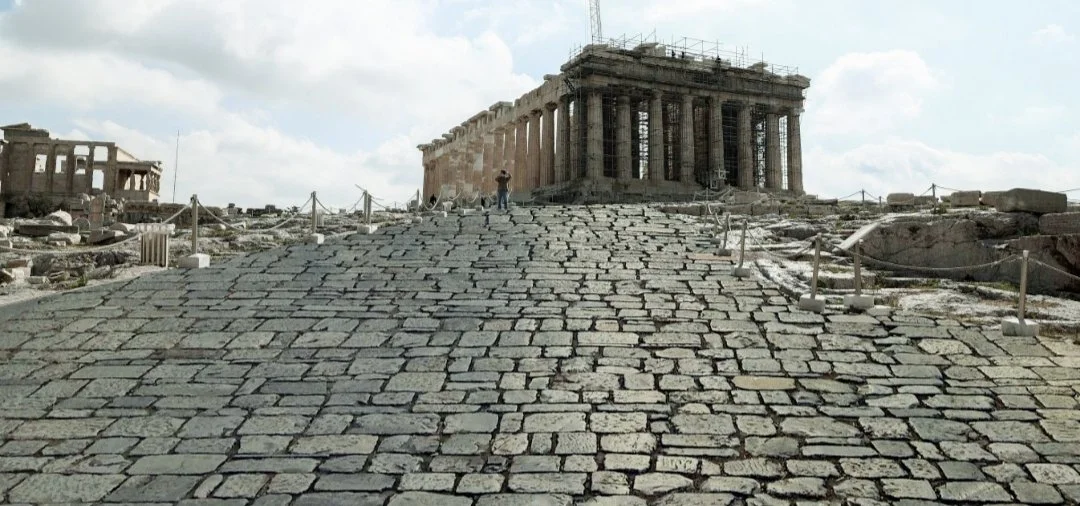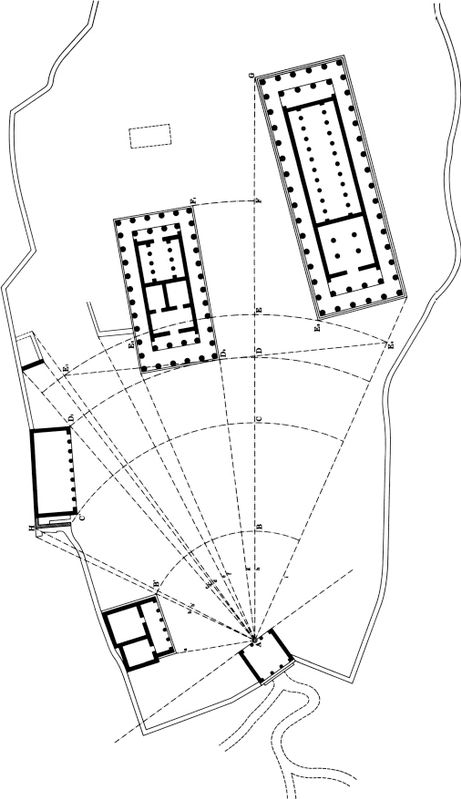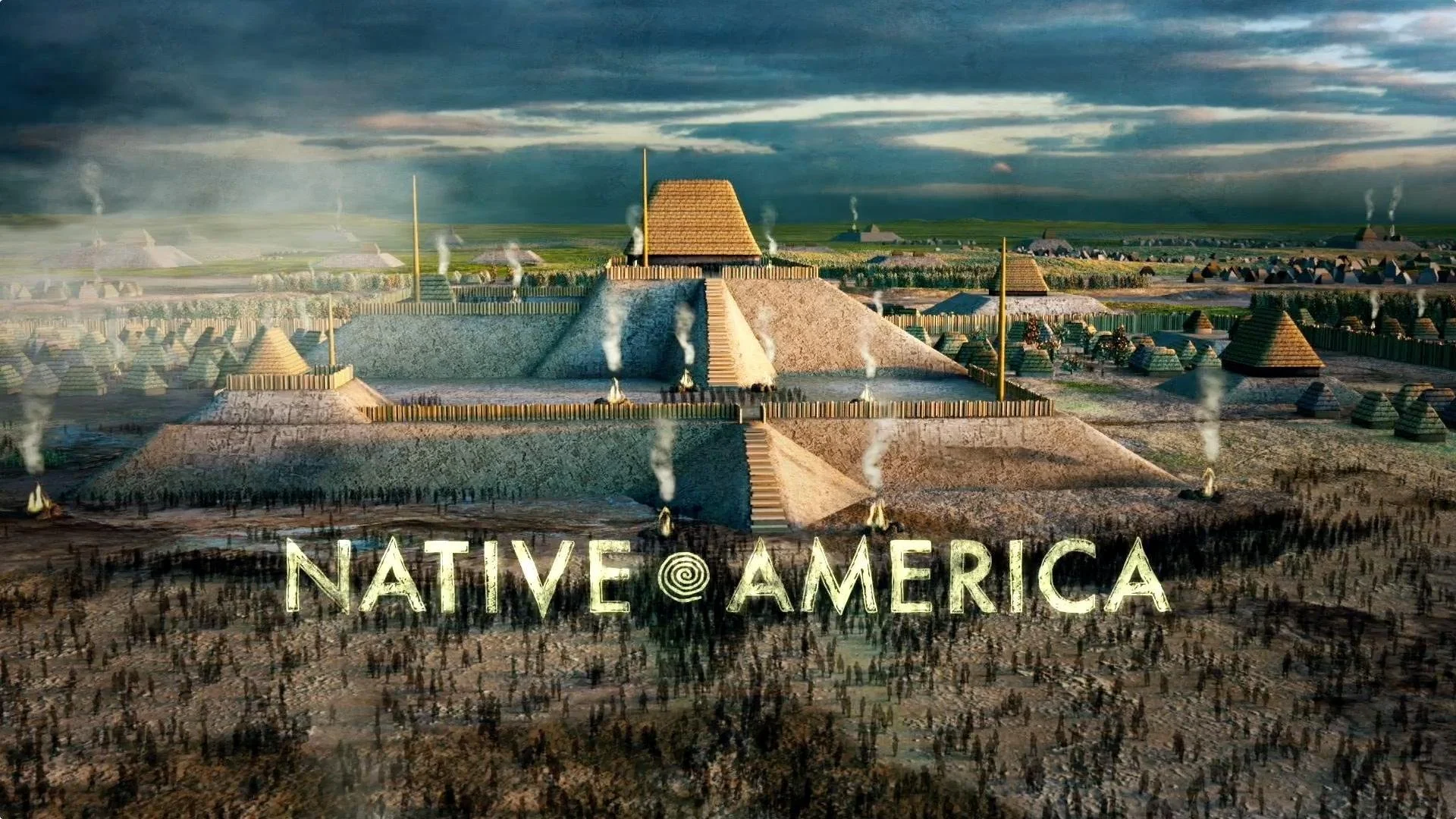primera parte: la historia de los tiempos y espacios clasicos
3 planicies, basamentos y plataformas
cahokia
teotihuacan
tikal
tenochtitlán
ciudad prohibida
acropolis
CAHOKIA MOUNDS WORLD HERITAGE & STATE HISTORIC SITE is the largest pre-Columbian site north of Mexico. At its peak, around 1100, this metropolis stretched over 4,000 acres, encompassed about 120 earthen mounds, and hosted a population of nearly 20,000 individuals – larger than London at that time. The State of Illinois now protects roughly 2,200 acres of the central portion of the Site. Including 72 of the nearly 80 remaining mounds, as some mounds are situated in unprotected portions of the Site.
Teotihuacan was the first large metropolis (125,000–200,000 inhabitants by the 6th century) in the Americas. The Aztecs attributed names and significance to its buildings but had no contact with this earlier culture. Very little is known of the people who built Teotihuacan, and as a result, much of our knowledge of the site, its art, and Teotihuacan culture is derived from Aztec sources. The city is thought to have been established around 100 BCE, with major monuments continuously under construction until about 250 CE. The city may have lasted until sometime between the 7th and 8th centuries CE, but its major monuments were sacked and systematically burned around 550 CE.
Settlement at Tikal began from around 300 BCE. In 378 CE Tikal was invaded by forces from distant Teotihuacan (or at the very least trade contacts were established) with a consequent influence on the cultural practices at Tikal, from clothes to art and architecture. In the 6th century CE the power of Teotihuacan declined, and other Maya cities, notably Caracol, sought military expansion, defeating Tikal in 562 CE. However, by the 7th century CE Tikal regained its place as an important Maya city, contemporary with such centres as Palenque, Copan, and Tikal's greatest rival Calakmul. The most impressive new buildings were the massive pyramids known simply as Temple I and II. Along with other Maya cities, Tikal went into gradual decline during the 8th century CE, and by around 900 CE the site had been abandoned.
The Temple of the Inscriptions' interior and Pakal's funerary chamber (light gray) and the Temple's exterior and its basal platform (transparent gray) are seen in this perspective 3D render.
Temple of the Inscriptions, Palenque
The Forbidden City, also known as the Imperial Palace, is a vast complex of palaces, temples, and courtyards that was the home of China’s emperors for centuries. Located in the heart of Beijing, the Forbidden City was built between 1406 and 1420 and served as the imperial seat of power until the last emperor was overthrown in 1911.
The Forbidden City - Painting: Regularity of Dimension. One of the steps in the construction process of the Forbidden City is painting. The palace complex certainly wouldn’t look the same without its vibrant colors. A popular pigment is vermilion. But the craft of painting does not exclusively mean applying colors, its goal is also to protect timber structures.
Tou-Kung, is known as Bracket Set (Liang & Fairbank, A pictorial history of Chinese architecture, 1984), and is a vital support component in the Chinese traditional wooden tectonic systems. Multiple interlocking bracket sets are formed by placing a large wooden block (dou) on a column to provide a solid base for the bow-shaped brackets (gong) that support the beam or another gong above it. The function of dougong is to provide increased support for the horizontal beams that span the vertical columns, or pillars, by transferring the weight over a larger area of a beam into each column. As multiple dougong brackets are added, the weight of the roof compresses the joints and distributes the weight evenly throughout the structure. This way, individual elements are not prone to splitting or cracking and the system of interlocking beams cannot be shaken apart, or shattered under stress
referencias
In 1962, Jørn Utzon, the architect of the Sydney Opera House, published a short yet seminal essay titled “Platforms and Plateaus.” The text is an account of his fascination with the architecture of the platform, of which Utzon mentions a few examples, including the giant platforms in the Yucatán, the plinth upon which Old Delhi’s Jama Masjid sits, the floor of a traditional Chinese or Japanese house, and the mysterious architecture of Monte Albán in Mexico.
Utzon’s interest in the platform can be developed further, toward a more critical genealogy of this architectural form. Platforms are not just pedestals that function to single something out of their immediate context. They are alterations of the ground that can be read as tangible indexes of power relationships.
referencias adicionales
Native America: Cities of the Sky explores the creation of some of the ancient world’s largest and most impressive cities. An archaeologist explores some of the world’s largest pyramids in Central America, scientists 3D-scan a lost city of monumental mounds on the Mississippi River, and native elders reveal ancient powers of the sky in modern-day Missouri. Modern research suggests these ancient urban centers are more than just great feats of engineering and artistry. They are heavenly cities—aligned to and inspired by the movement of the sun, moon, and stars.
The Maya - their soaring pyramids, monumental cities and mythical mastery of astronomy and mathematics have captured our imaginations and spurred generations of explorers into the jungles of Central America on a quest to understand them. Lost World of the Maya surveys their dramatic rise to prominence in the 'pre-classic era' of the Maya as well as new evidence of the collapse of their civilization in the 800-900's AD.
Bracket sets are created by placing a wooden block (“dou”) onto a column to form a solid base. Another wooden bracket (“gong”) is then inserted into the dou to support either a wooden beam, or another gong
Adding new layers of brackets on top means the dougong pieces need to be slightly modified, there are about 30 combinations with simply variations to create different structures, but the core principle remains identical throughout. The system creates an incredibly robust structure which sits lightly on the floor without needing to be sunk into the ground. During the Ming dynasty period, variations on the basic shapes of the dougong system were developed allowing for taller and more decorative structures. It is believed that the more layers of brackets, the superior the building.
https://multimedia.scmp.com/culture/article/forbidden-city/architecture/inkstone_ch2.html



